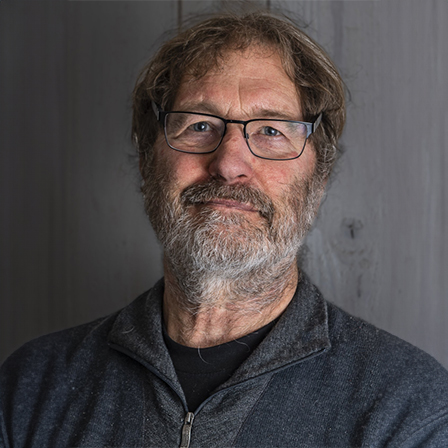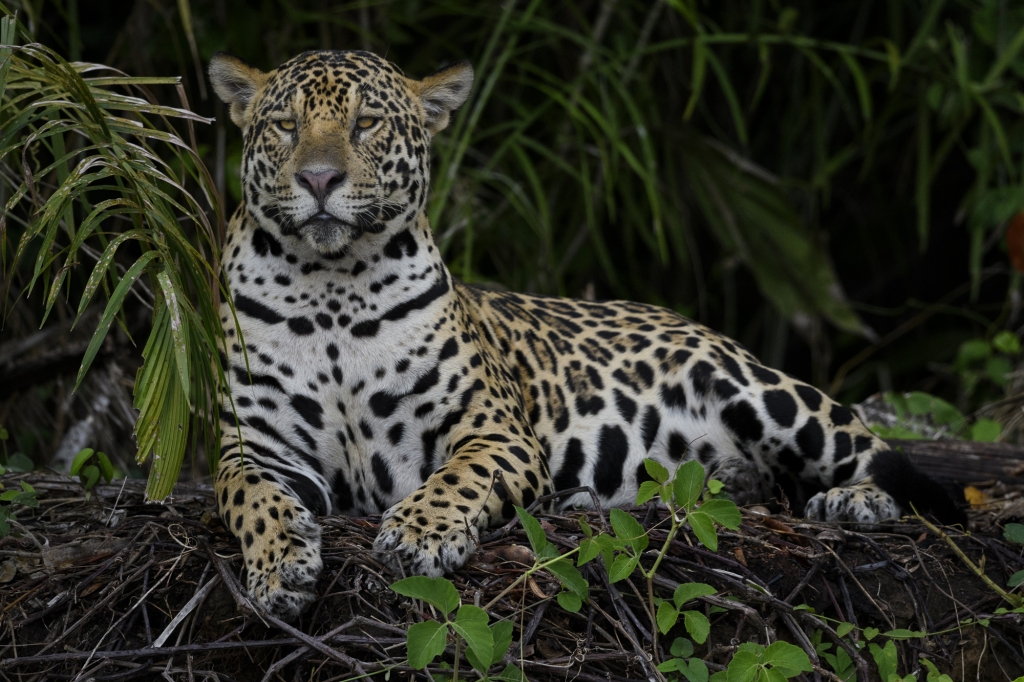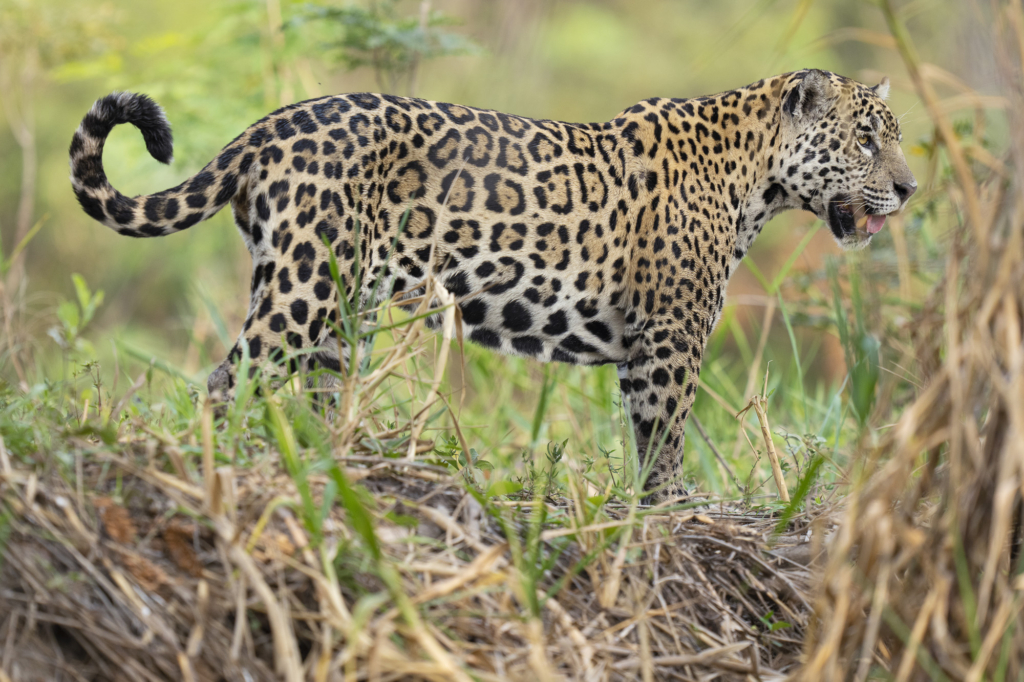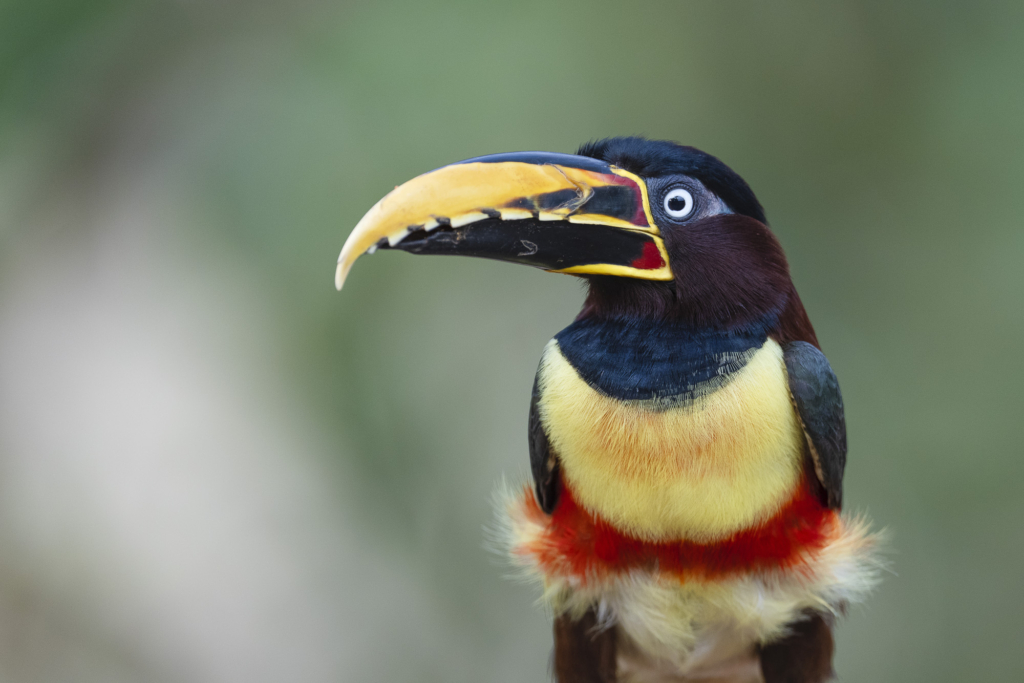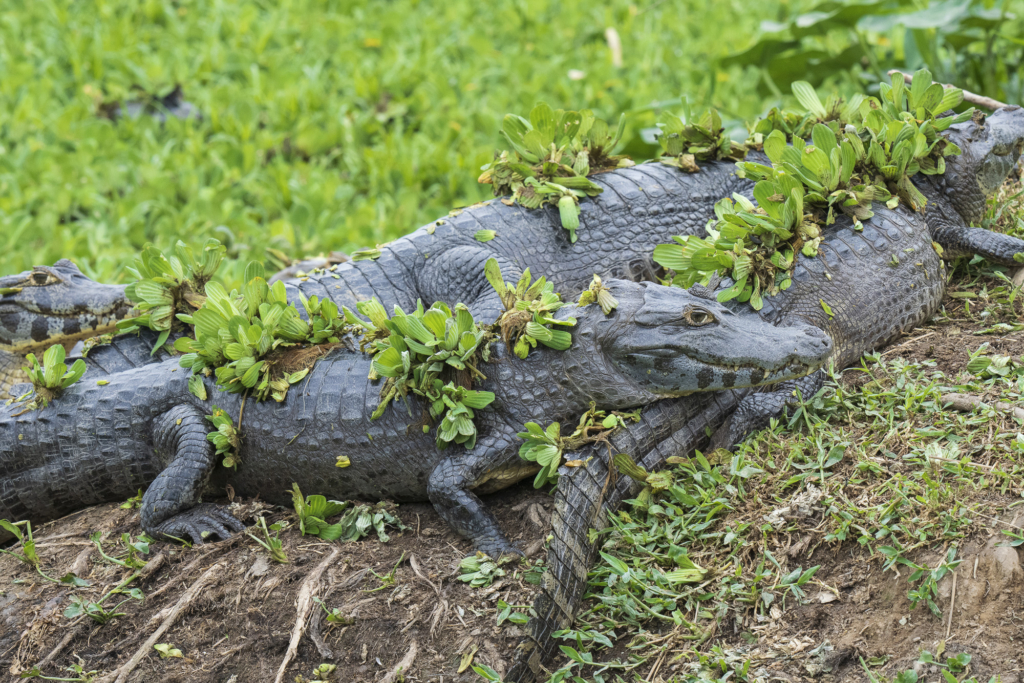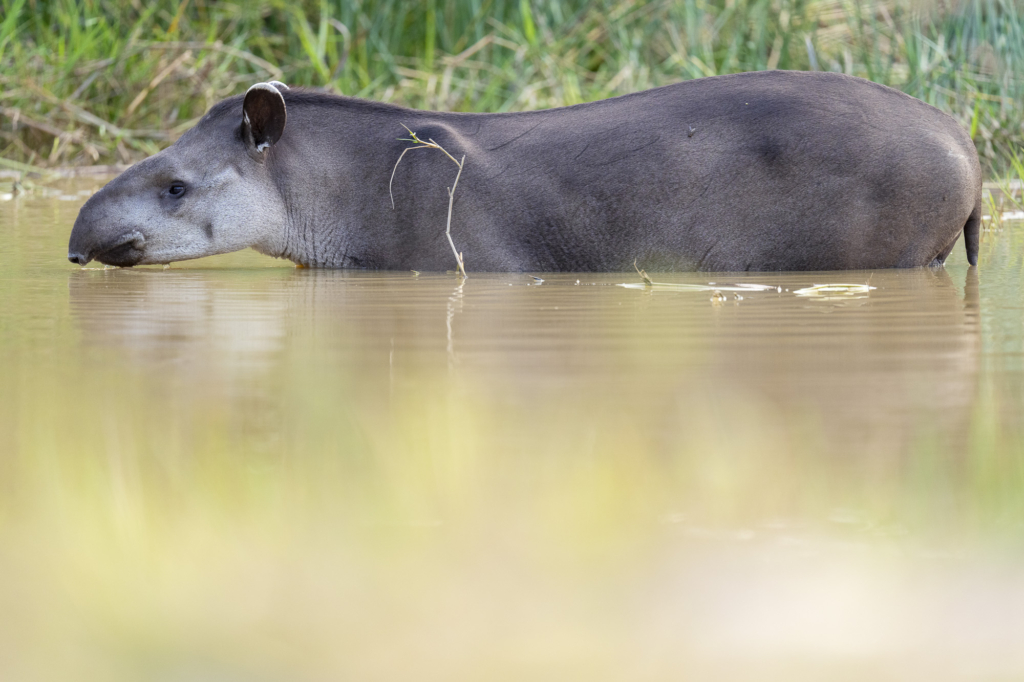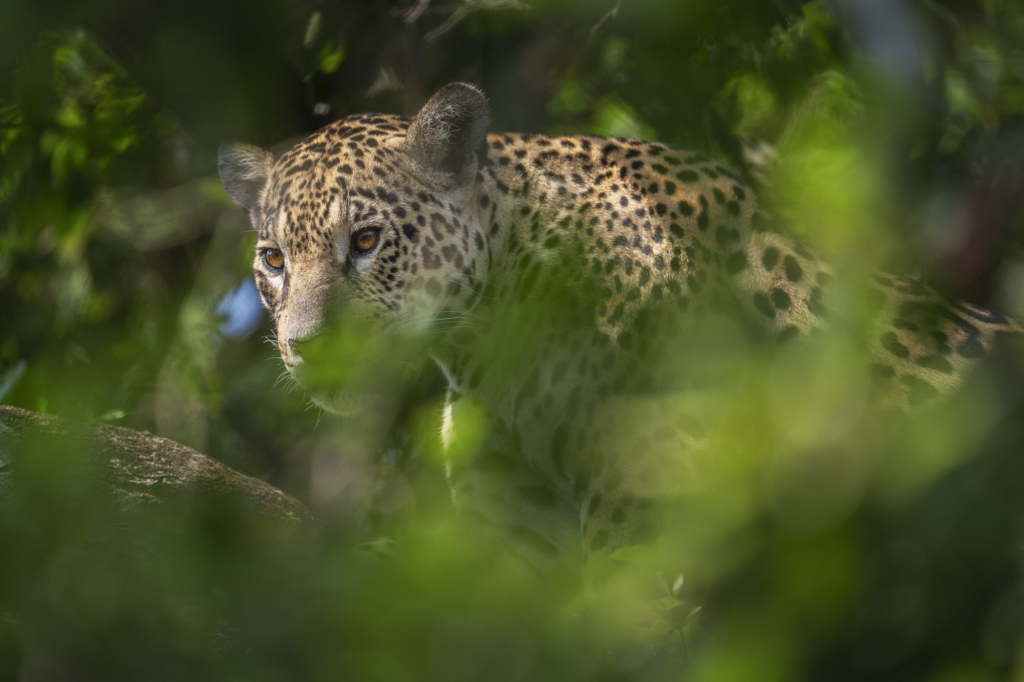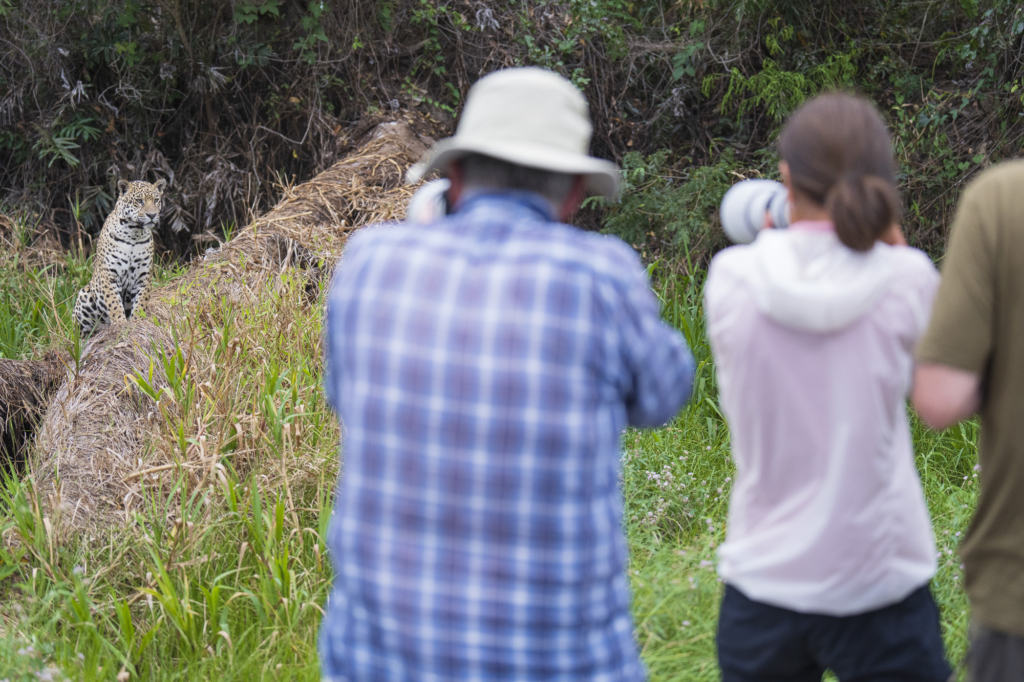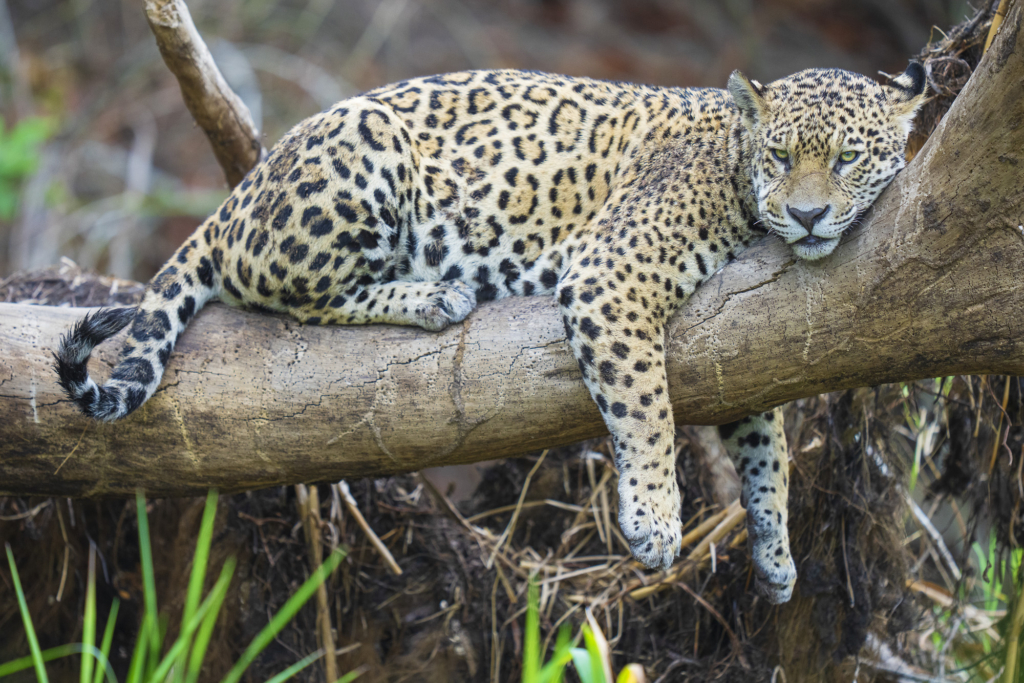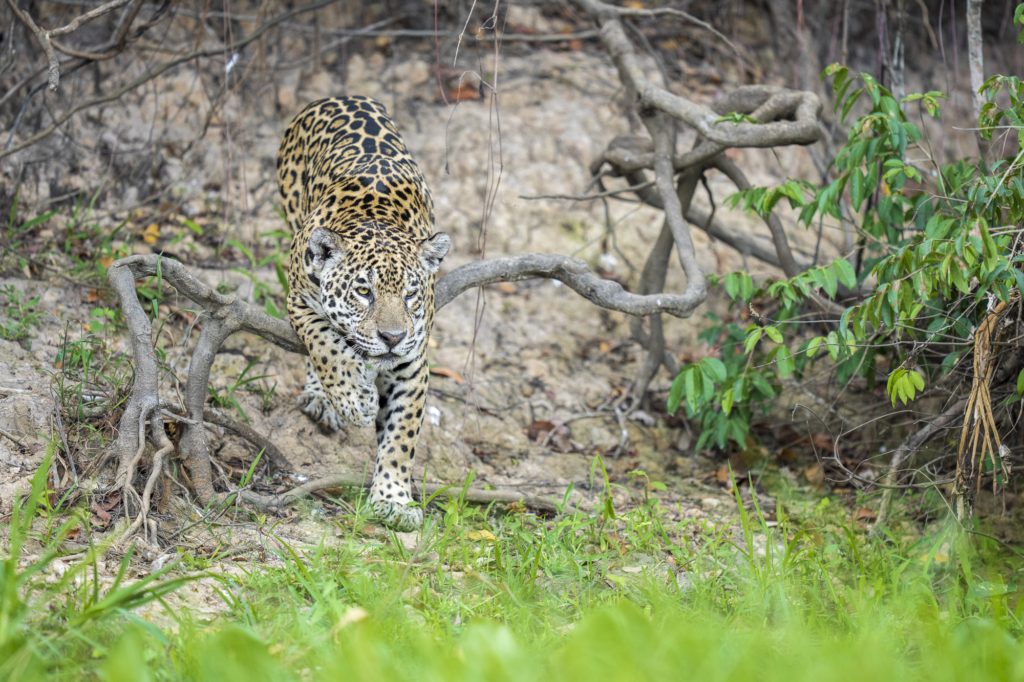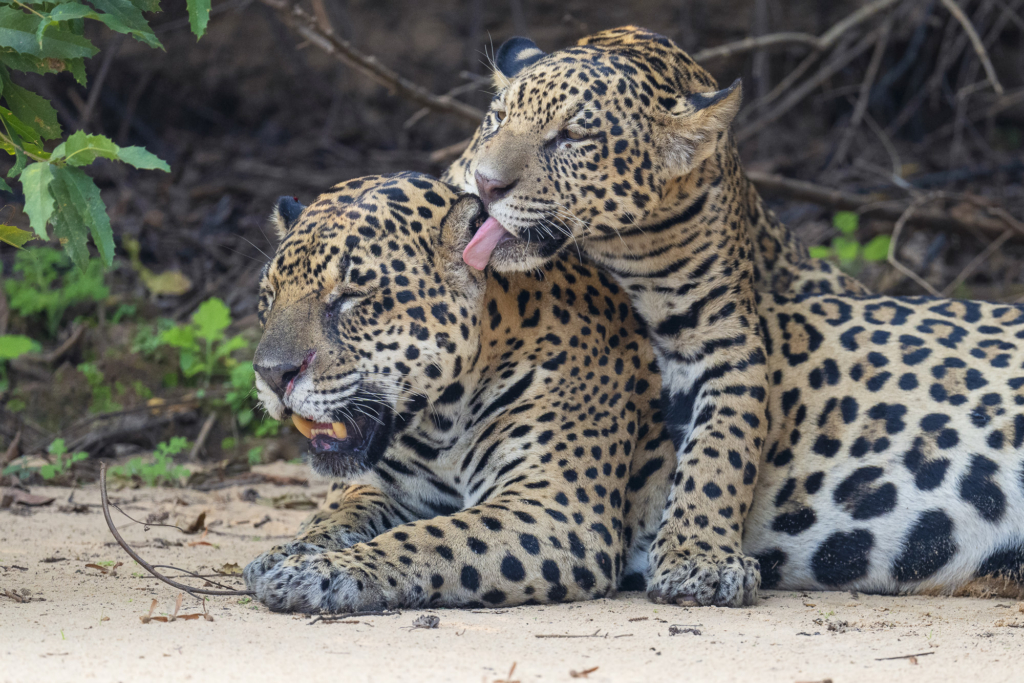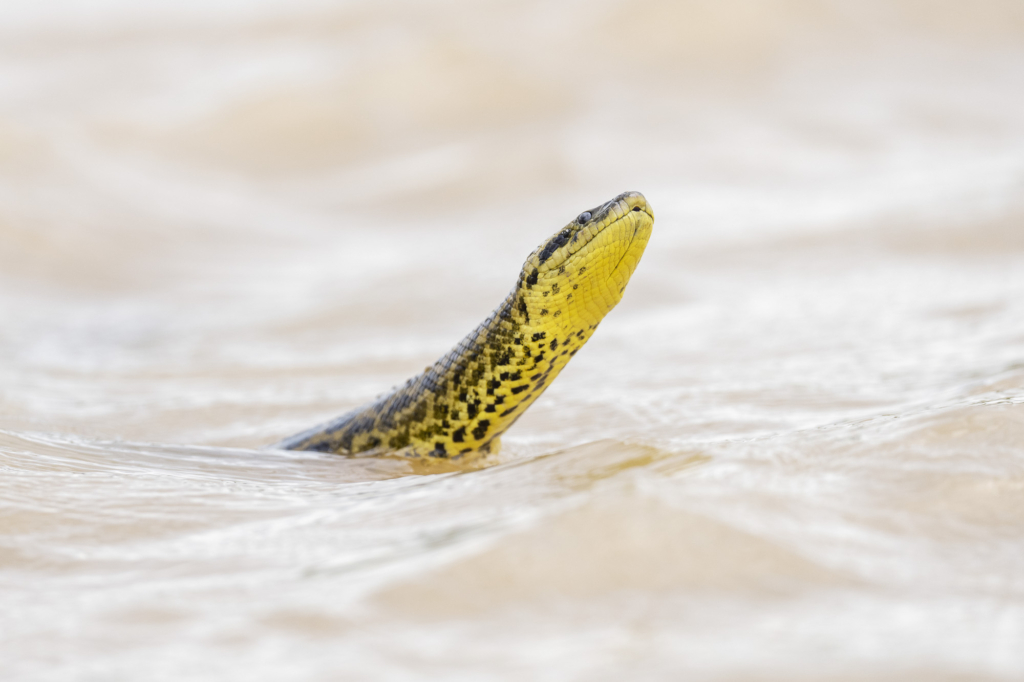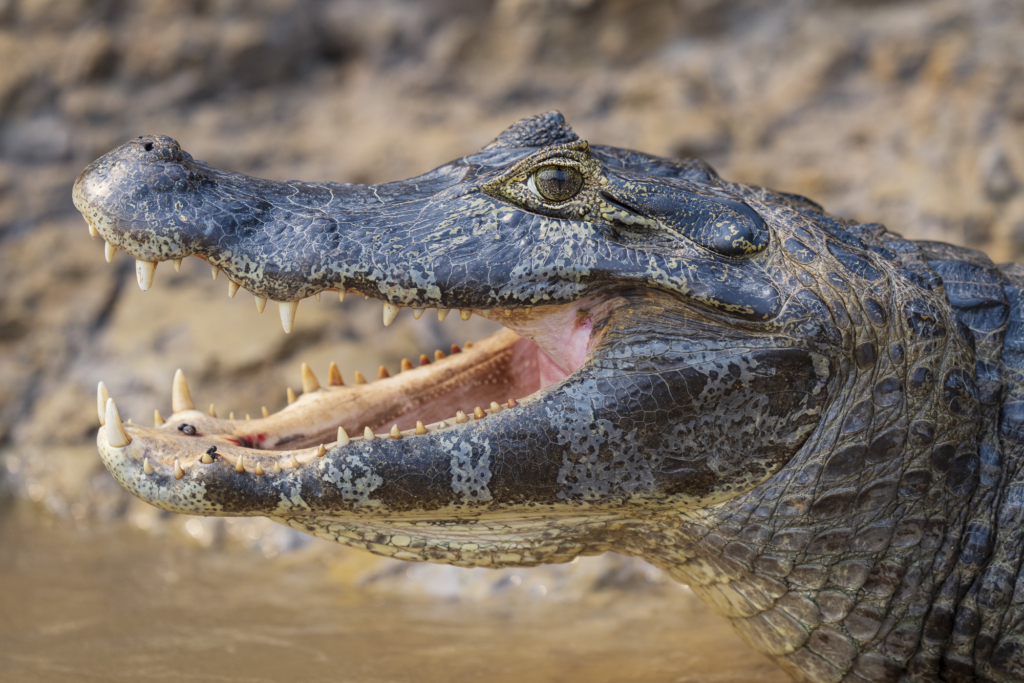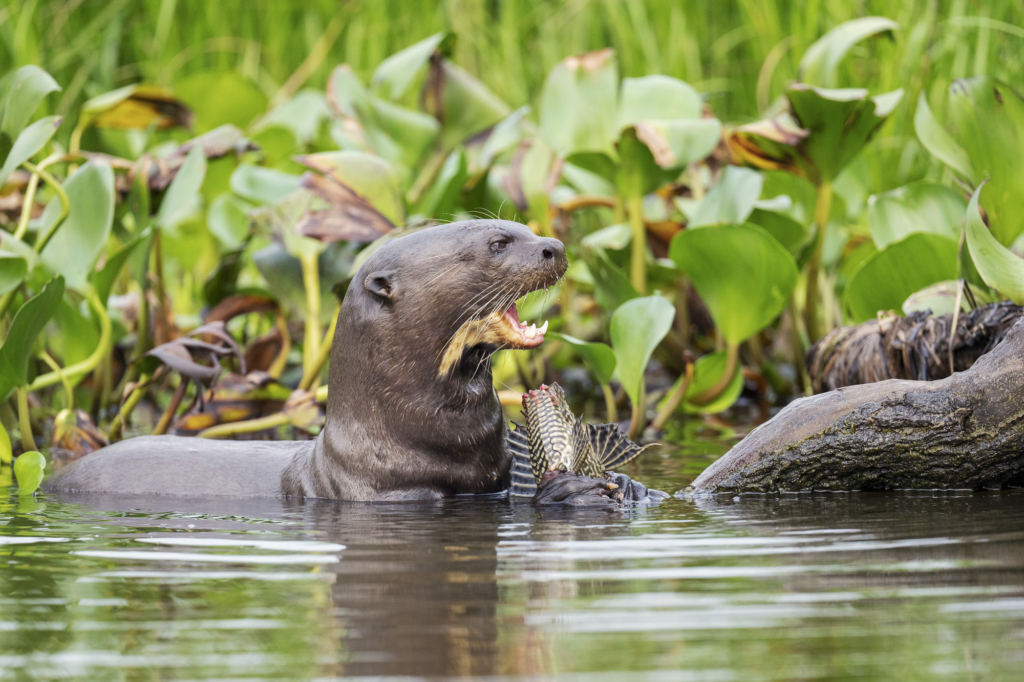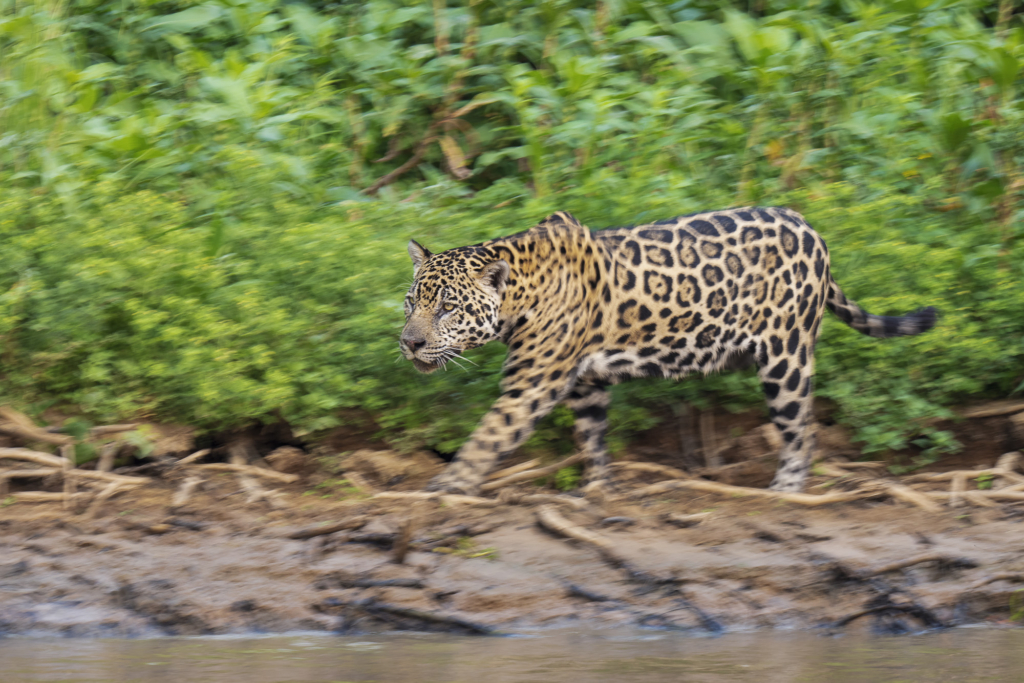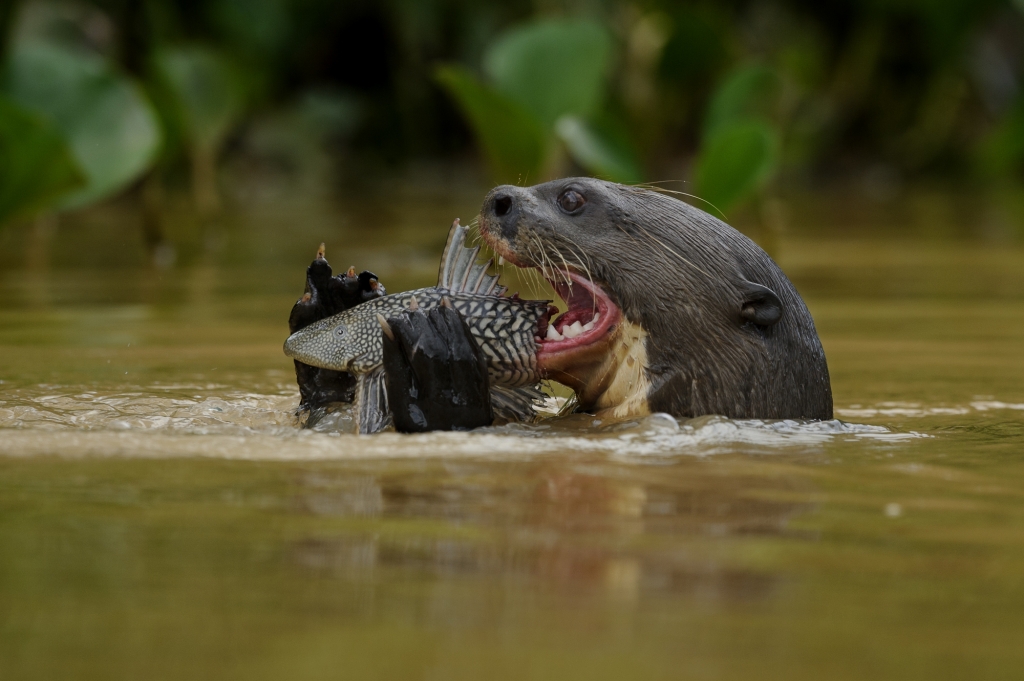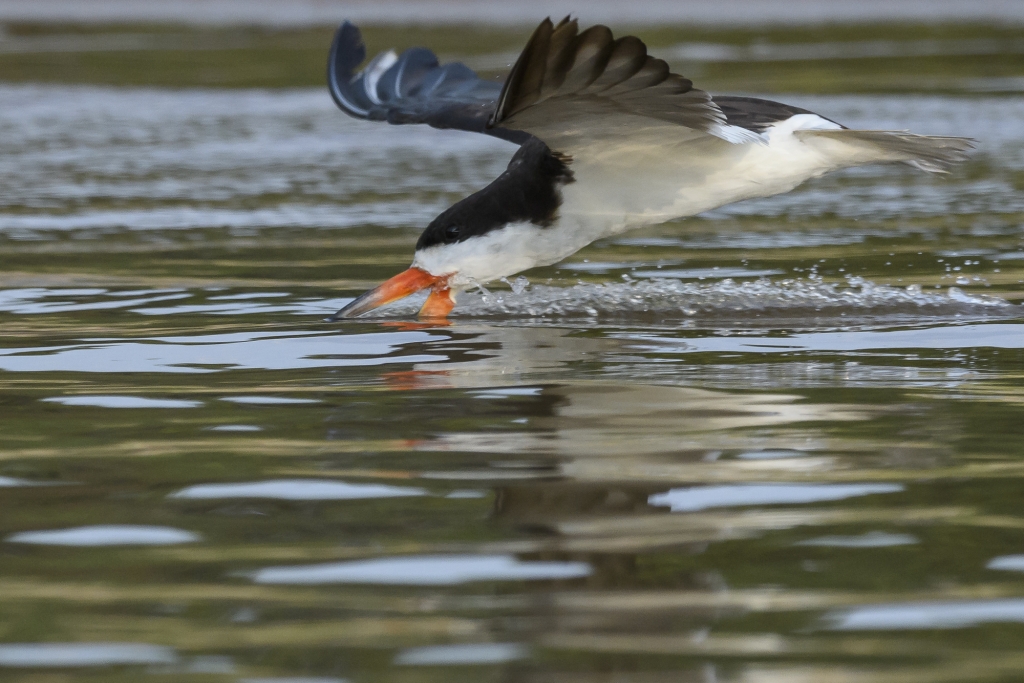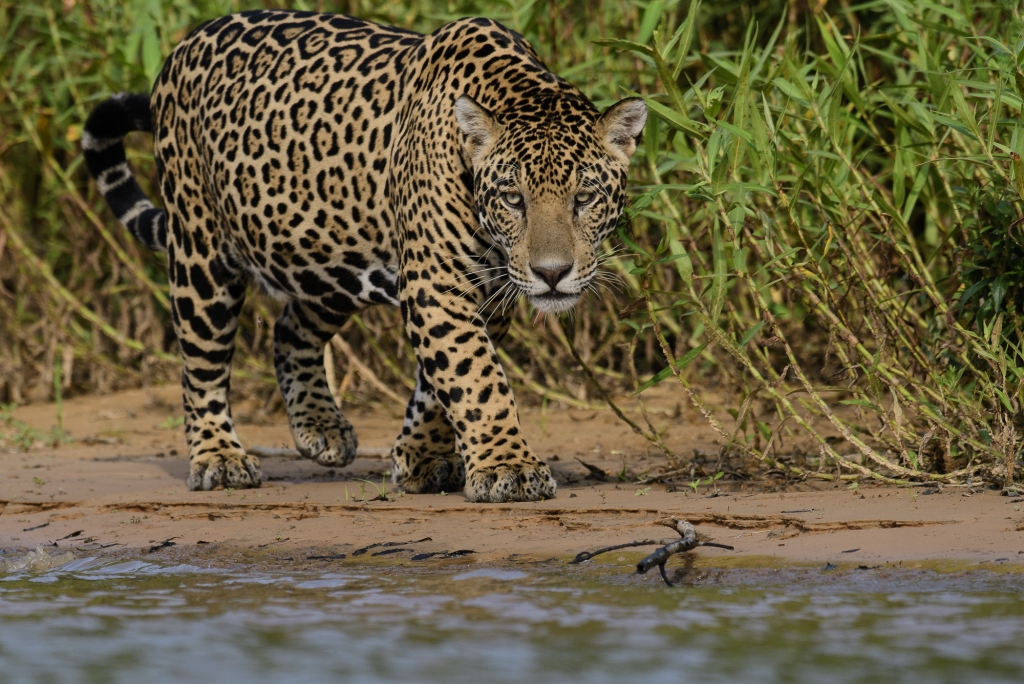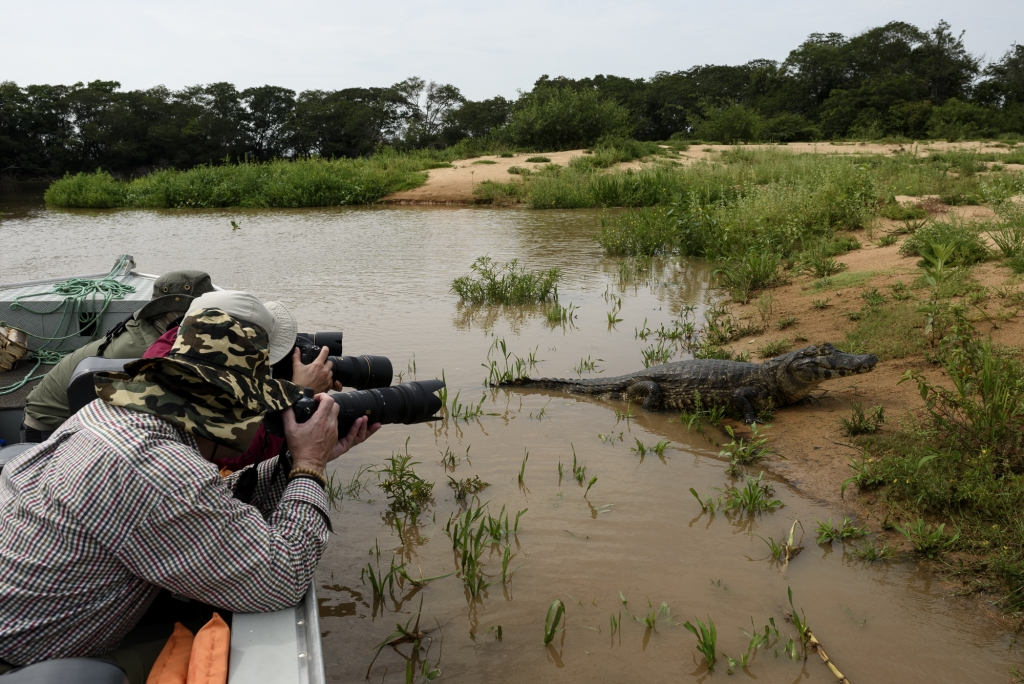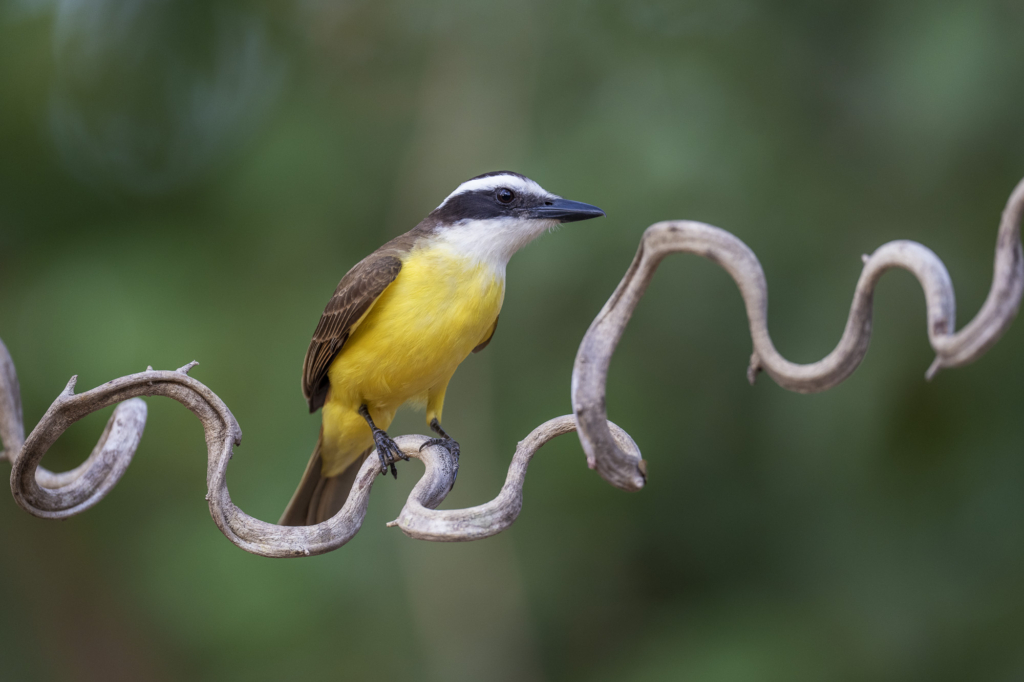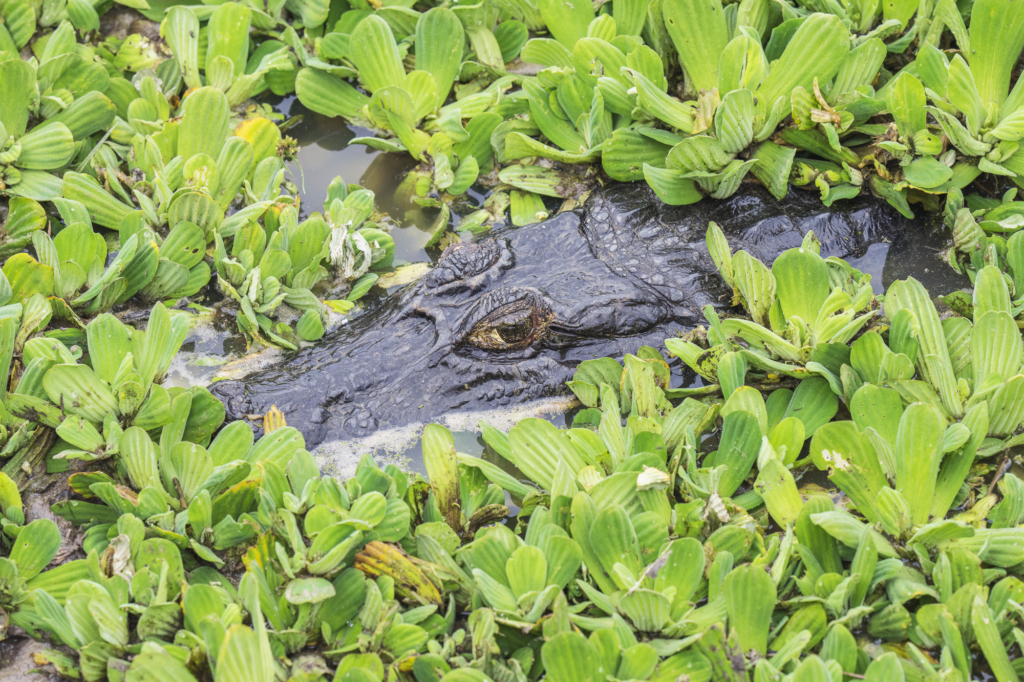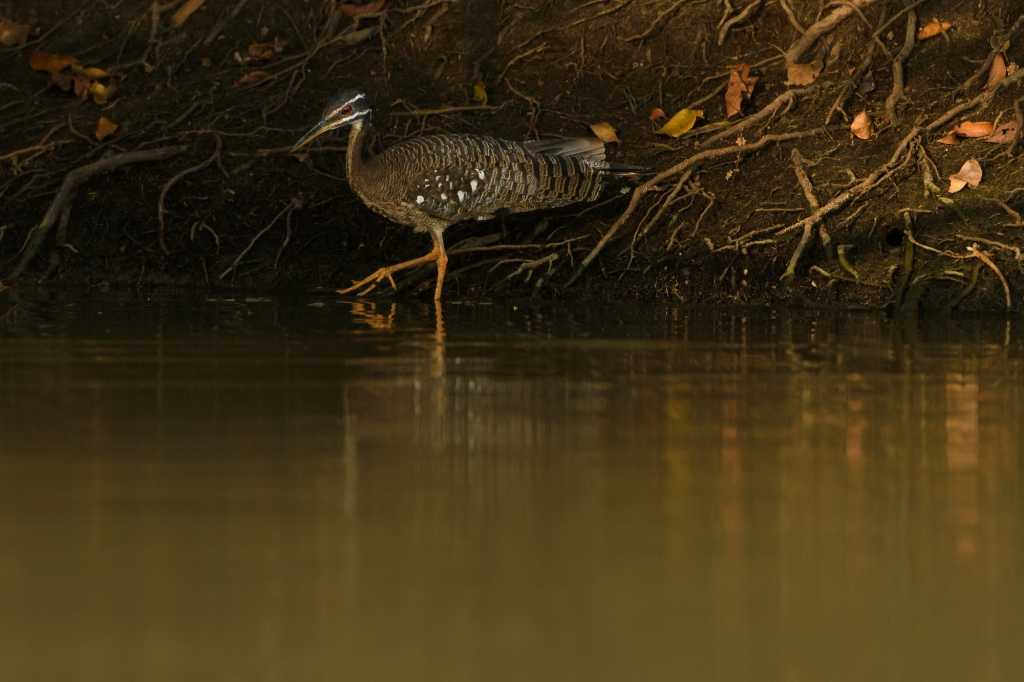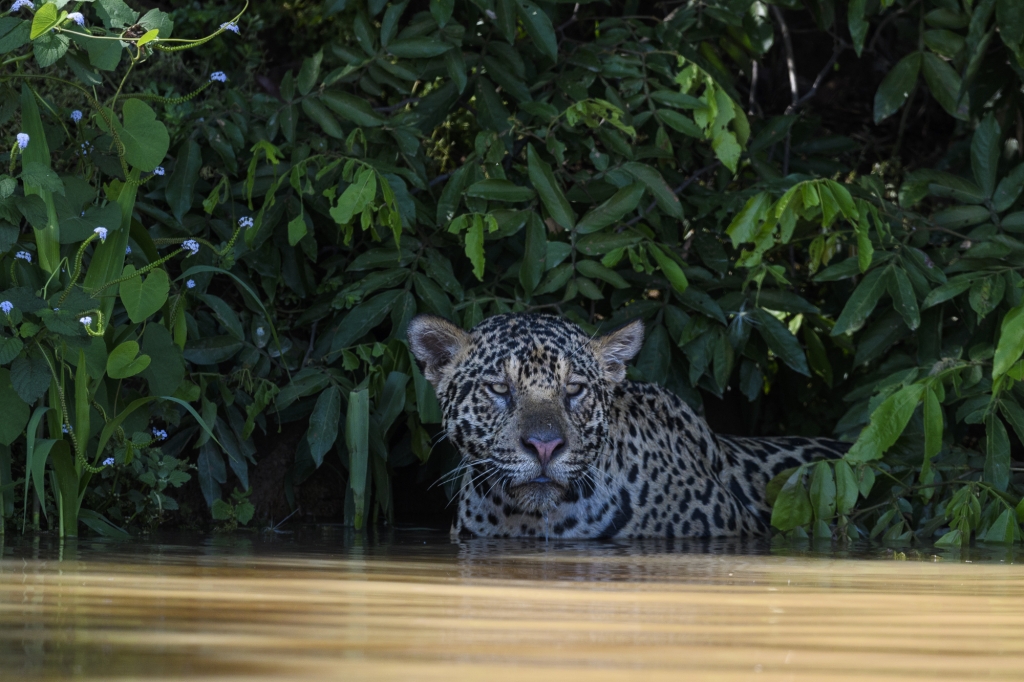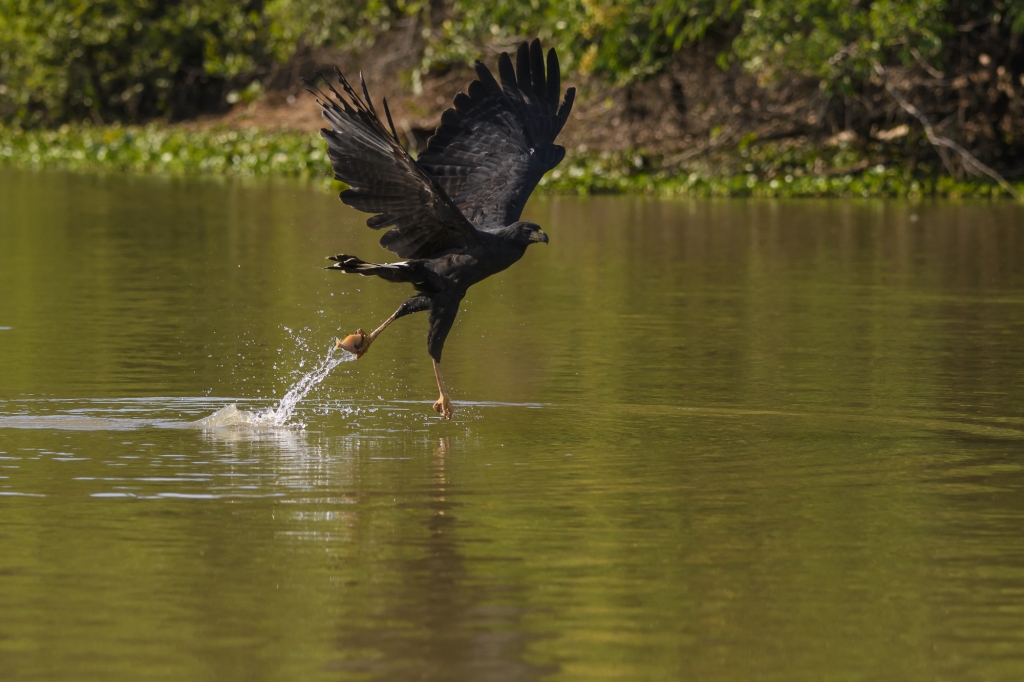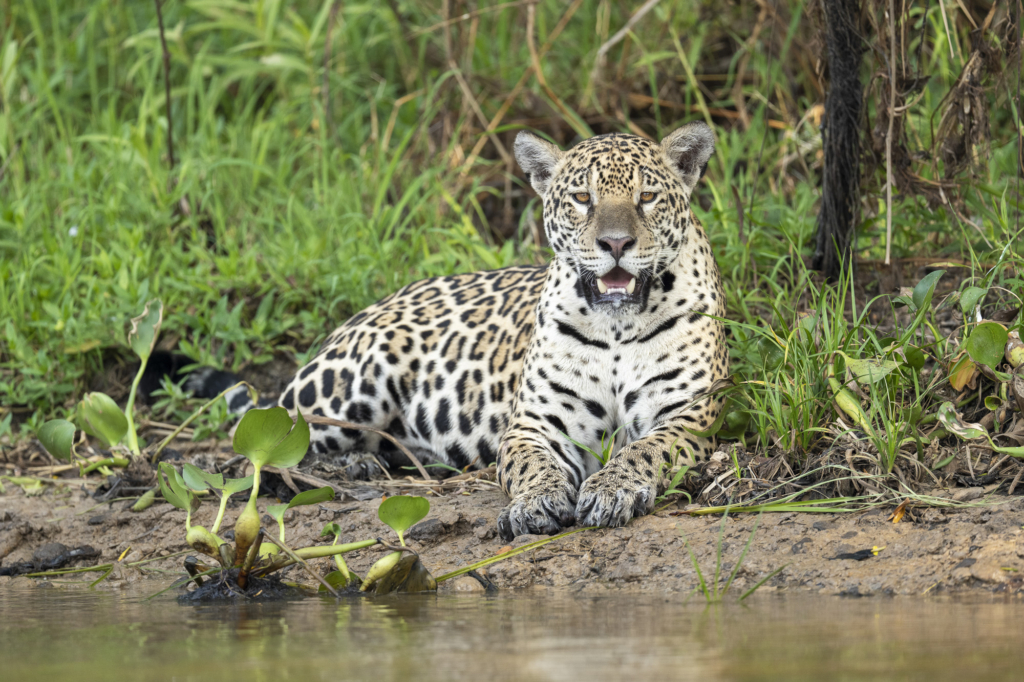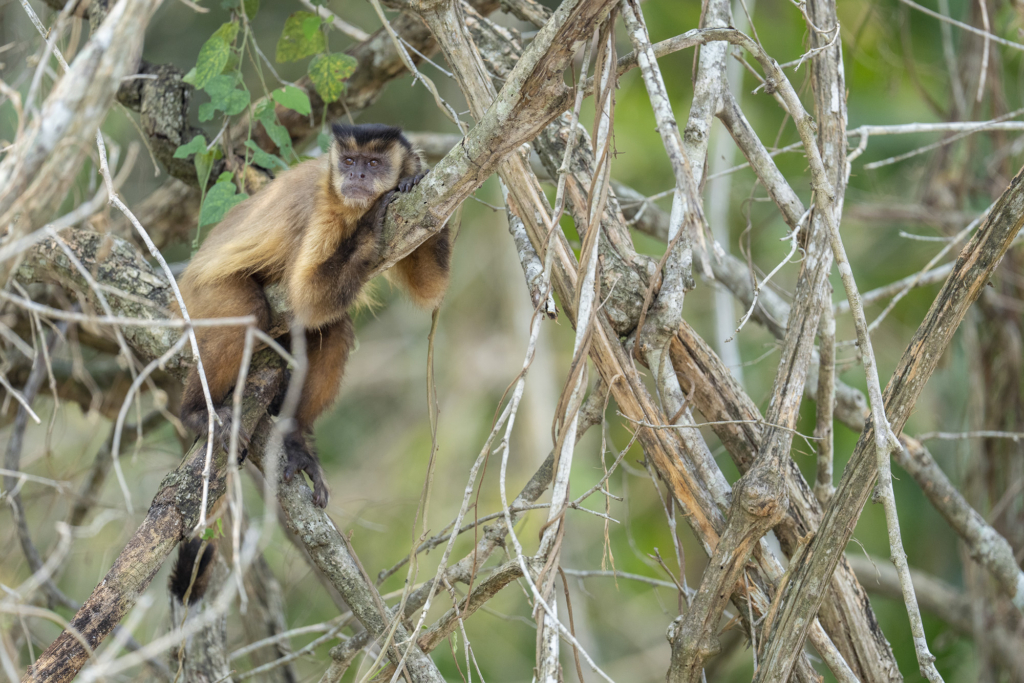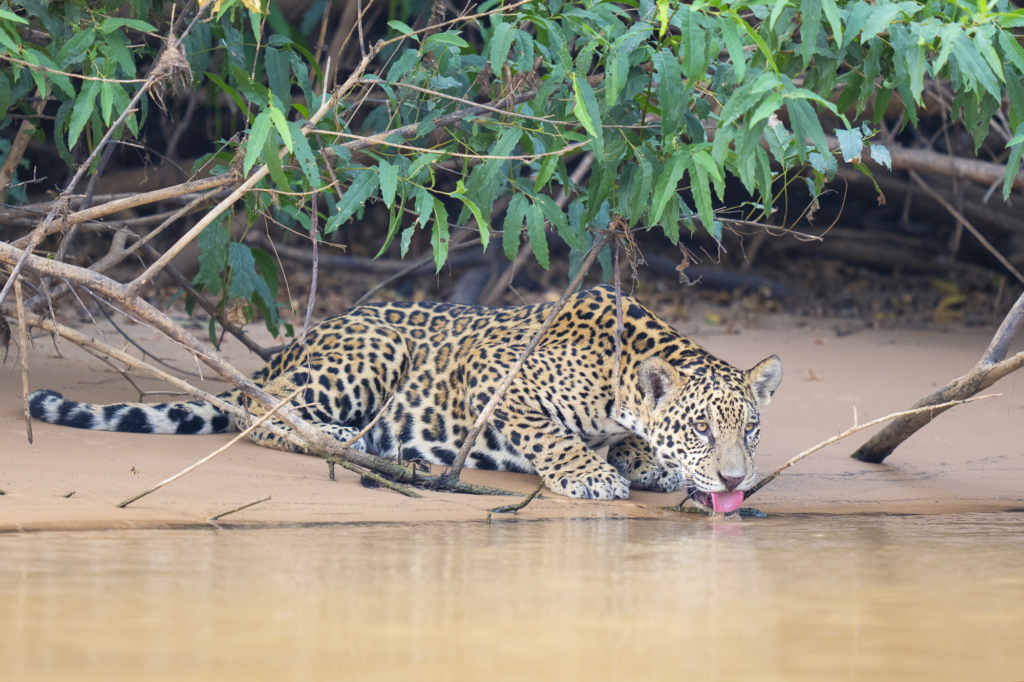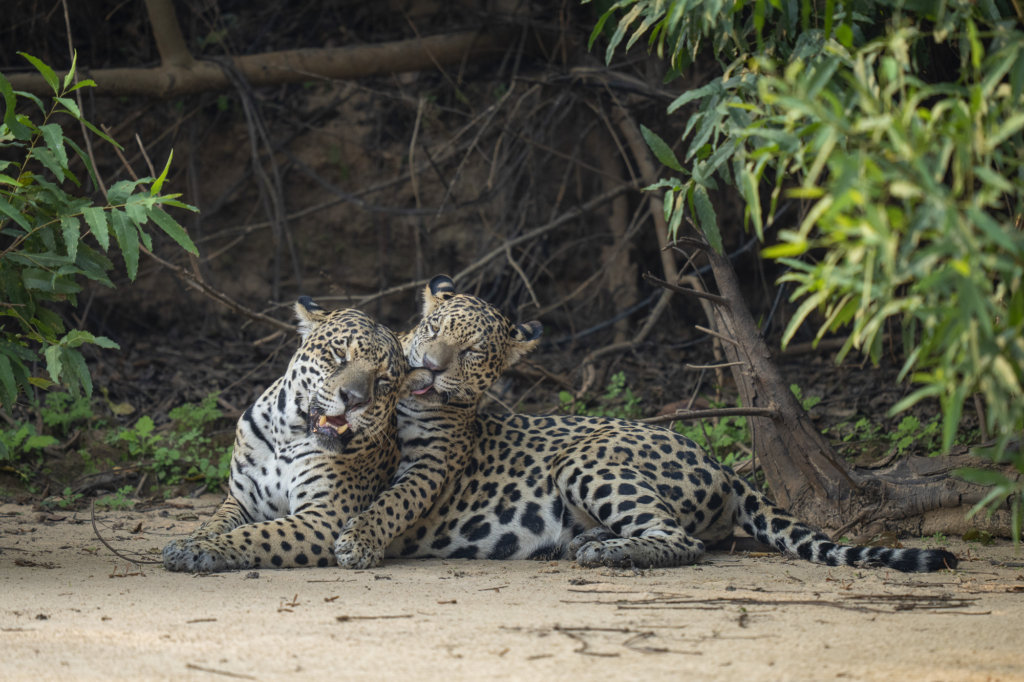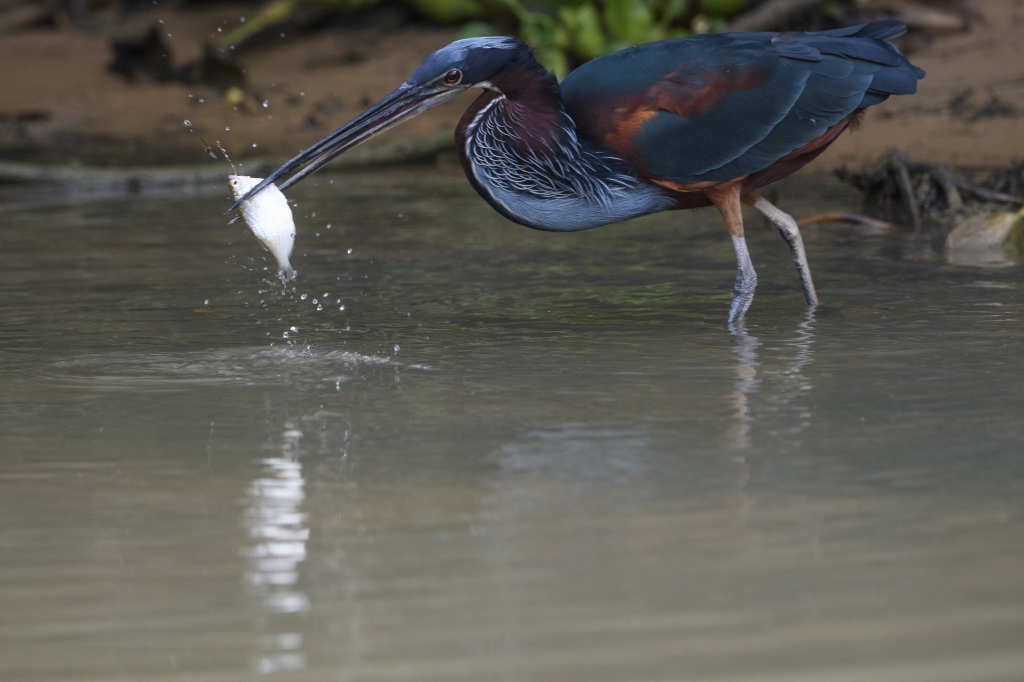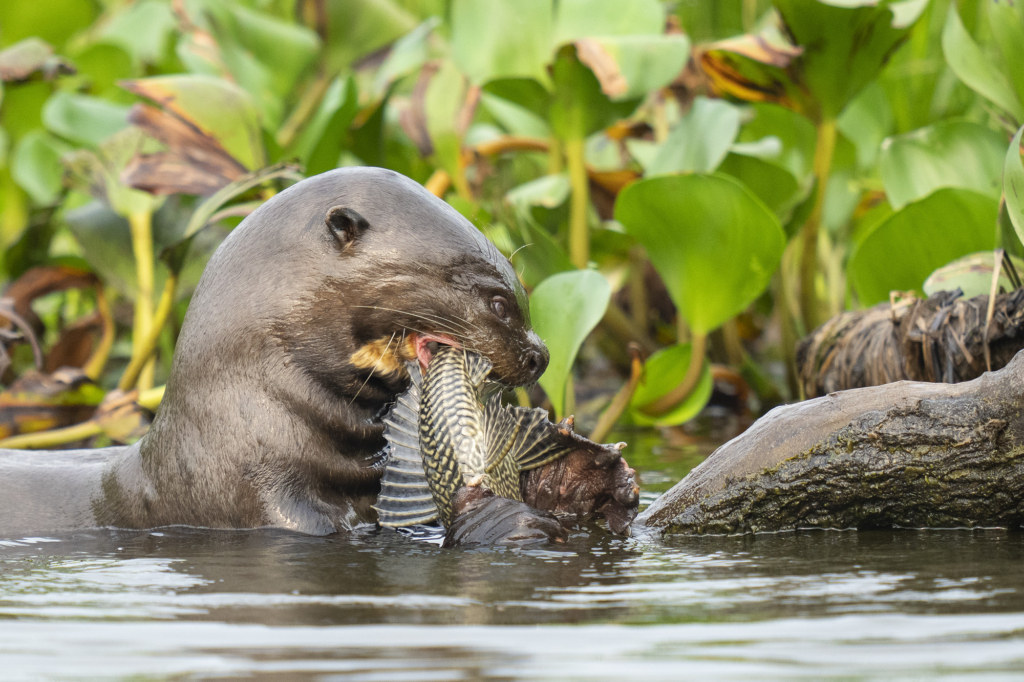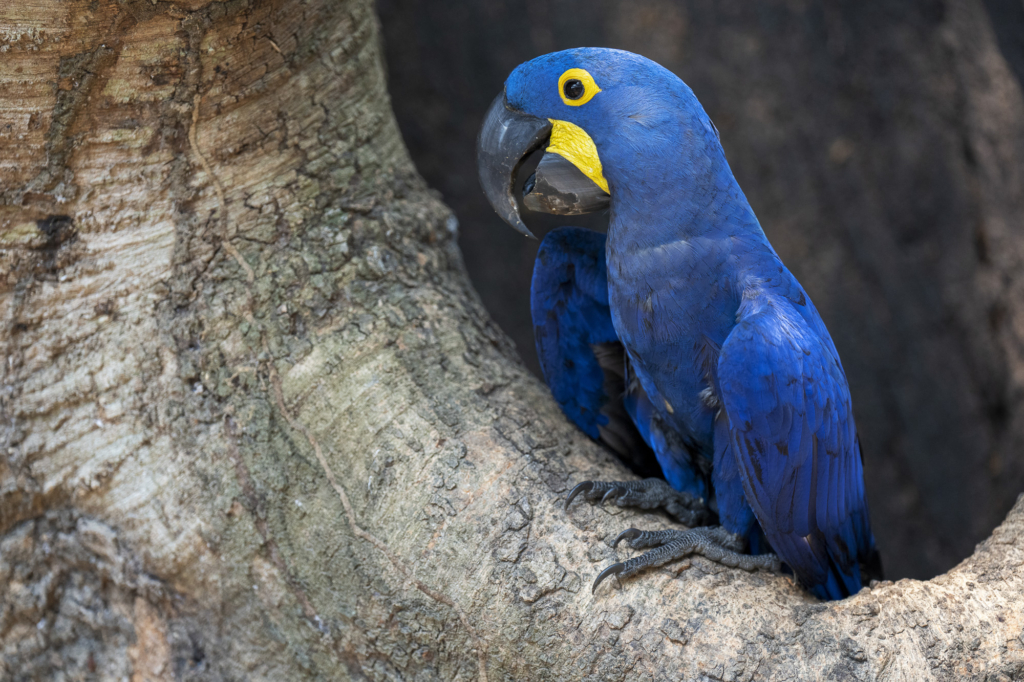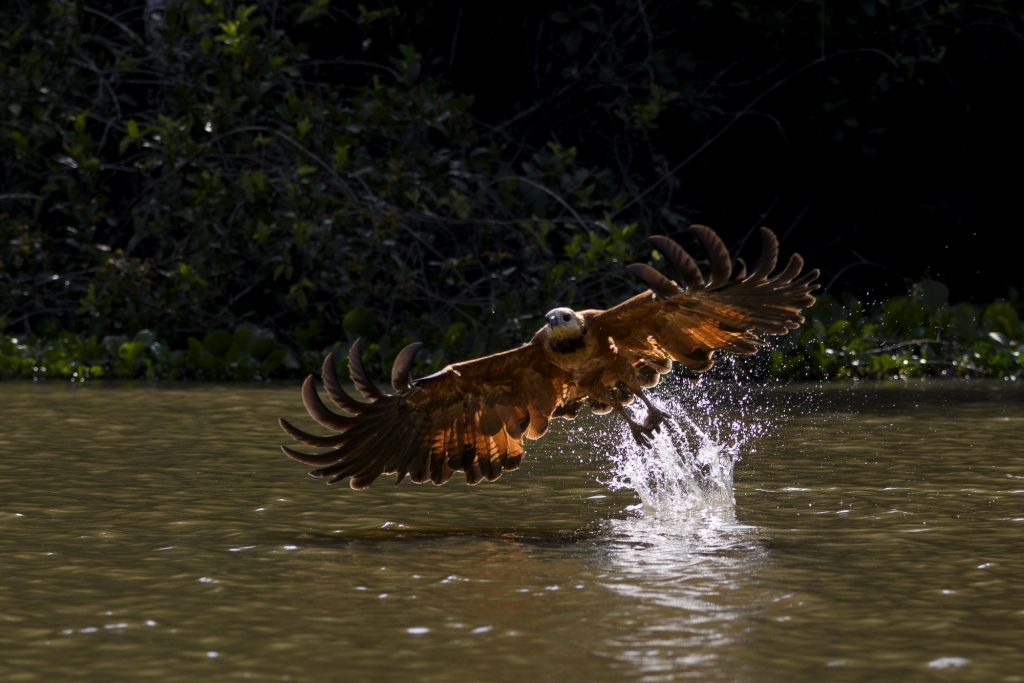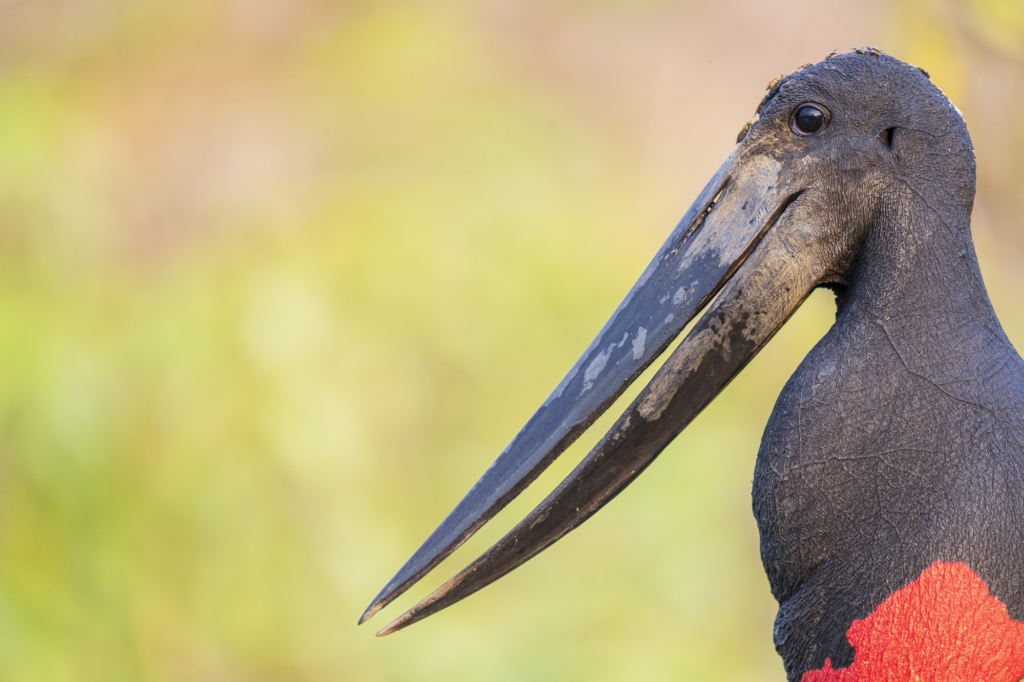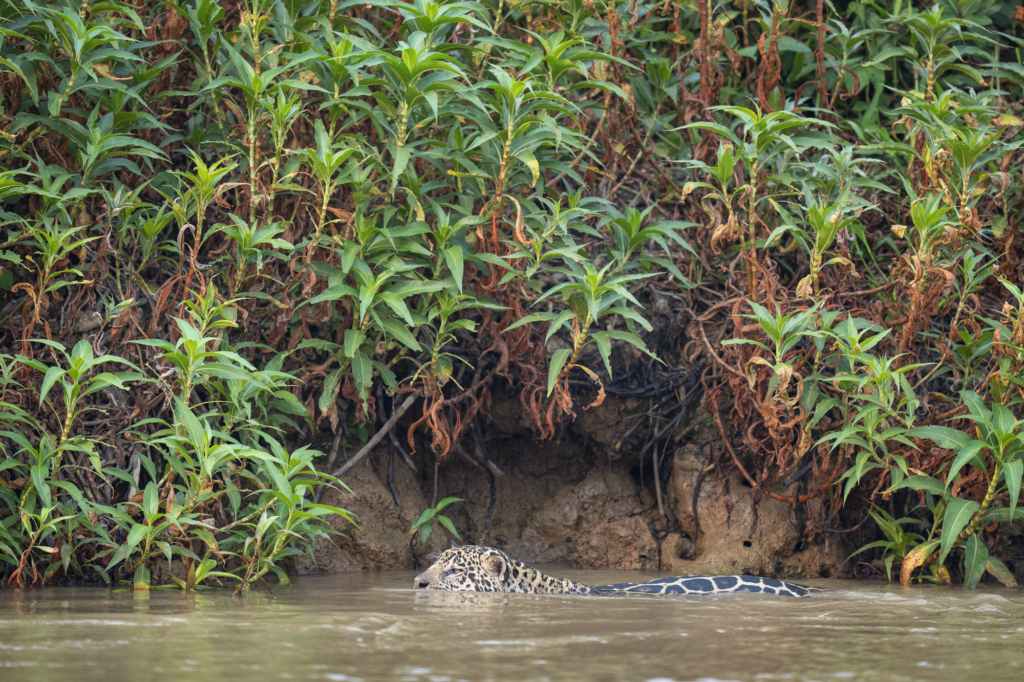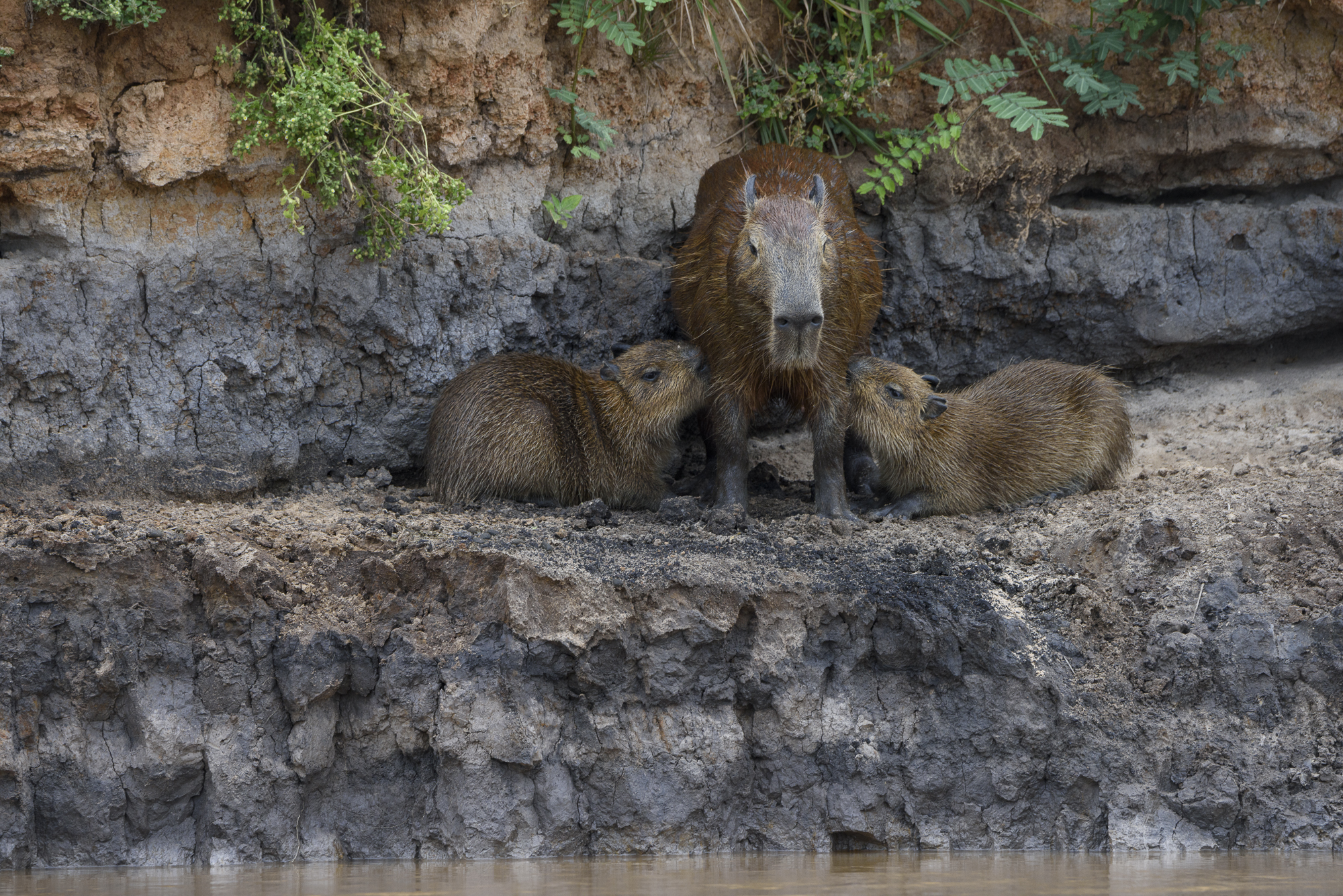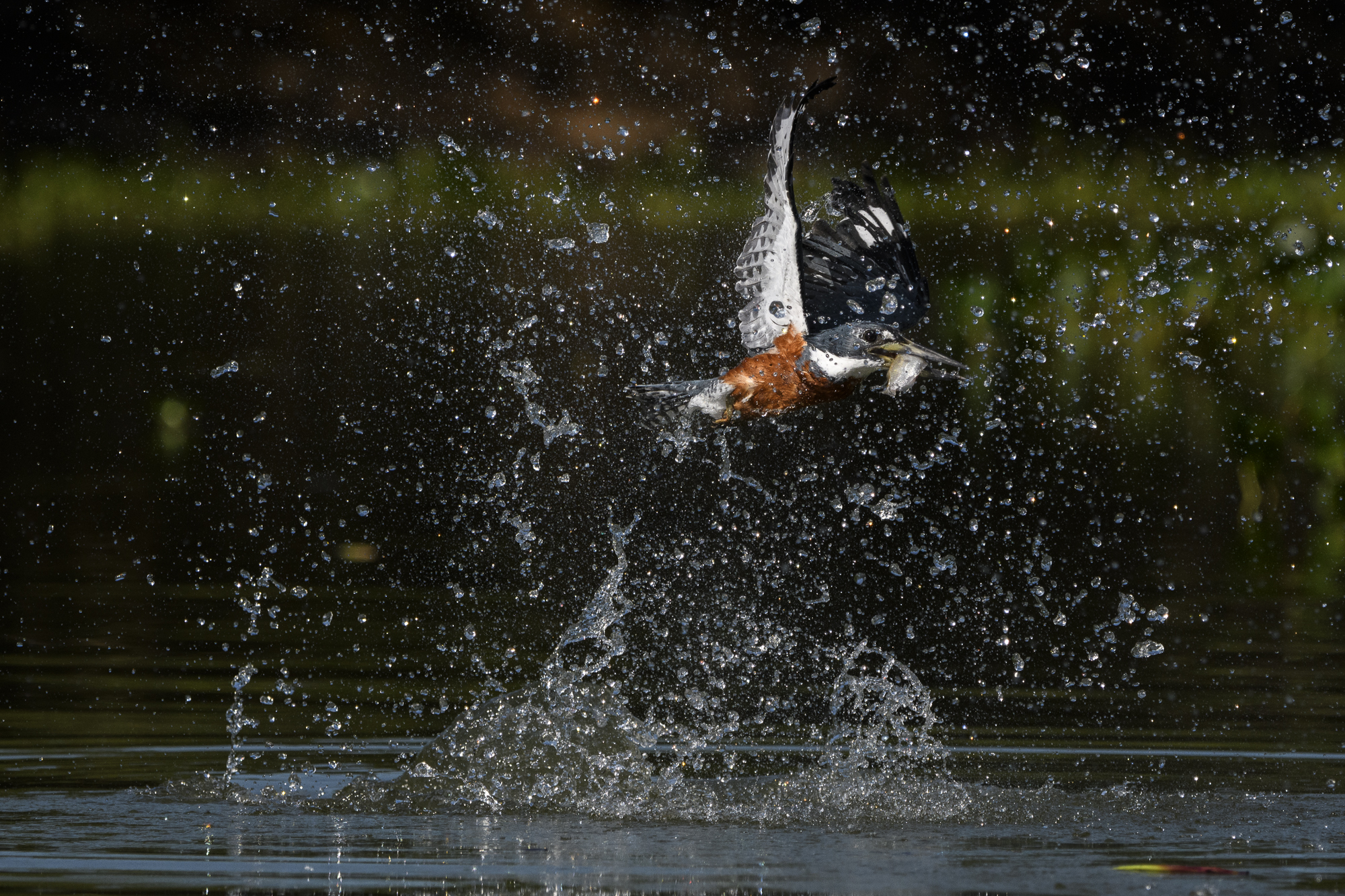Extend your tour with – Macaws and anteaters – South Pantanal, Brazil 21st – 26th October 2025.
Read more here…
SOME HIGHLIGHTS
- Jaguar – We spend 4 days (7 boat safaris) in the world’s best area to see and photograph these amazingly beautiful big cats
- Our local boat drivers are considered among the most professional and best in the area at finding jaguars and giant otters
- On these boat safaris, we are only 4 photographers per boat, so there is plenty of space
- Great chances for close encounters with rare mammals such as the tapir and giant otter, with some possibility of spotting the elusive ocelot
- The world’s largest stork – the Jabiru stork
- The world’s largest parrot – the Hyacinth macaw
- The world’s largest rodent – the Capybara
- Thousands of Yacaré caimans and chances to see anaconda
- Encounters with other mammals such as the coati, howler monkey, capuchin monkey, and several species of deer
- Amazing bird diversity with several other species of parrots, hummingbirds, toucans, storks, herons, kingfishers, and a variety of exciting birds of prey
- Night safaris to search for nocturnal animals and birds
- The tour leader will show you his favourite sites and provide photographic advice, in a small like-minded group
- And remember, we’ve always been there before!
PANTANAL
Pantanal is one of the World’s most biodiverse areas. It is often called the World’s largest wetland, spreading across hundreds of thousands of square kilometers in Brazil, eastern Bolivia and eastern Paraguay. Thanks to the high concentration of wildlife, high biodiversity and a number of varied habitats, Pantanal is really one of the natural wonders of the World. It hosts everything from Jaguars, Piranhas, Anacondas and Capybaras to Giant Otters, Caymans, Swamp deer and an amazing variety of birds. Pantanal is mainly open temporary wetland/savanna, with sparse gallery forests along the rivers and in higher parts. For several months, the Pantanal is almost completely flooded under meters of water. The rest of the year it is a lake-rich, dry savannah.
Wildlife is ever-present in Pantanal, with 405 species of fish, 600 bird species, 80 mammal species, 1100 butterflies and 50 reptile species. Threatened and endangered species such as Jaguars, Pumas, Giant Otters, Maned Wolf, Ocelot, Macaws, Tapirs and Giant Ant-eaters have all found a haven in the impenetrable wetlands.
WILDLIFE AND BIRDS
Whilst staying at lodges and traveling along the Transpantaneira road through the wilderness, we will be searching for interesting subjects to photograph. On the savannah we will be looking for mammals such as Capybaras, Tapirs and Coatis. Large numbers of Herons, Darters, Kingfishers and Jabirus gather in the wetlands. There we will also find thousands of Caymans. Lodge gardens and surroundings provide a plethora of photo opportunities. Here we find less shy species of birds and mammals. Rivers form the veins of the Pantanal, and there is lots to see and discover. On boat rides along the river Pixaim we will also be able to photograph fishing birds of prey and Kingfishers. Weather-permitting we will visit a lodge where the endangered Hyacinth Macaws are abundant. Rivers also give us many chances to come across Jaguars. They are normally pretty shy, but here they tend to come down to the rivers during the dry season to drink, hunt and rest, which usually gives us good chances to see and photograph these great animals. In order to make the best of our opportunities we will be staying on a floating hotel right in the middle of the Jaguar’s core area. During these five days we will make 10 boat safaris in search of Jaguars and other interesting subjects such as Giant otter, Tapir, Capybara and lots of birds to photograph. On each boat trip there will be only be four photographers per boat, to get the best possible photo opportunities.
The tour is planned in order for us to be able to focus on particular species at particular sites. The areas we have chosen to visit in northern Pantanal provide the best possible opportunities to photograph the characteristic species that occur here. Naturally, we will be able to photograph also much more than these main focus species.
Itinerary
Day 1 (14/10) (Lunch – Dinner)
We meet up in Cuiabá at 9 in the morning. Transport to our lodge. Lunch on the way to the lodge. After lunch, our first encounter with the wildlife-rich Transpantaneira road. In the afternoon and late evening, we head out on safaris to search for the spectacular wildlife of the Pantanal. The lodge has a large number of wetlands that are teeming with animals. The ranch where we stay has unusually fearless wildlife, as no hunting has taken place there in over 25 years. Even when we’re not on safari, there are great photo opportunities, especially for birds, in the surrounding area around the lodge.
Day 2 (15/10) (Breakfast – Lunch – Dinner)
The morning is spent in the areas around our lodge. We embark on our first safari at dawn. Before lunch, we change lodges, but it’s just a short trip to a nearby lodge. We’ll stay here for two nights. In addition to the “usual” spectacular wildlife of the Pantanal, we have a very high chance of seeing and photographing ocelots both in daylight and in the evening.
Day 3 (16/10) (Breakfast – Lunch – Dinner)
The morning is spent in the areas around our lodge. We explore the surroundings on foot and by boat. After lunch, we head a bit south to the Pixaim River. Here, we embark on boat safaris to photograph fishing kingfishers and birds of prey. Perhaps we’ll encounter the legendary and beautiful Agami heron?
Day 4 (17/10) (Breakfast – Lunch – Dinner)
Early in the morning, we leave the lodge and head towards Porto Jofre, where the entire journey is a safari, offering many photo opportunities along the way. Porto Jofre will be our base for the upcoming days of jaguar adventures. We will stay here for 4 nights. Already on this first afternoon, we set out in boats to search for jaguars and everything else exciting along the riverbanks.
Day 5 – 7 (18 – 20/10) (Breakfast – Lunch – Dinner)
These three full days are spent on the Cuiabá River. Our main goal is the jaguar. We will also have the opportunity to photograph giant otters, caimans, birds, and a variety of other animals. We will only take one break during the day for lunch.
Day 8 (21/10) (Breakfast)
After an early breakfast, we leave Porto Jofre. If you have chosen to join the extension trip to the southern Pantanal, we will take a chartered flight to our next lodge. If you have chosen not to join the extension, you will travel back to Cuiabá and the airport for your flight home.
Photographic leader
Ola Jennersten is currently an active retiree. He worked for more than 30 years in nature conservation at the World Wide Fund for Nature (WWF). The camera has always been a natural companion for documenting, especially nature. Ola’s interests focus on species and nature conservation both nationally and internationally, as well as gardening, insects, and pollination.
He has visited numerous countries both as a WWF employee and, more recently, as a tour leader and photographer.
Ola has co-authored several books and countless articles featuring content from both near and far. Two of his books have been awarded WWF’s Panda Book prize (2017 and 2021). Ola regularly gives many lectures on topics such as illegal wildlife trade, tigers, pollination, and not least, insect-friendly gardens.
